How to build effective learning pathways at work (2023)
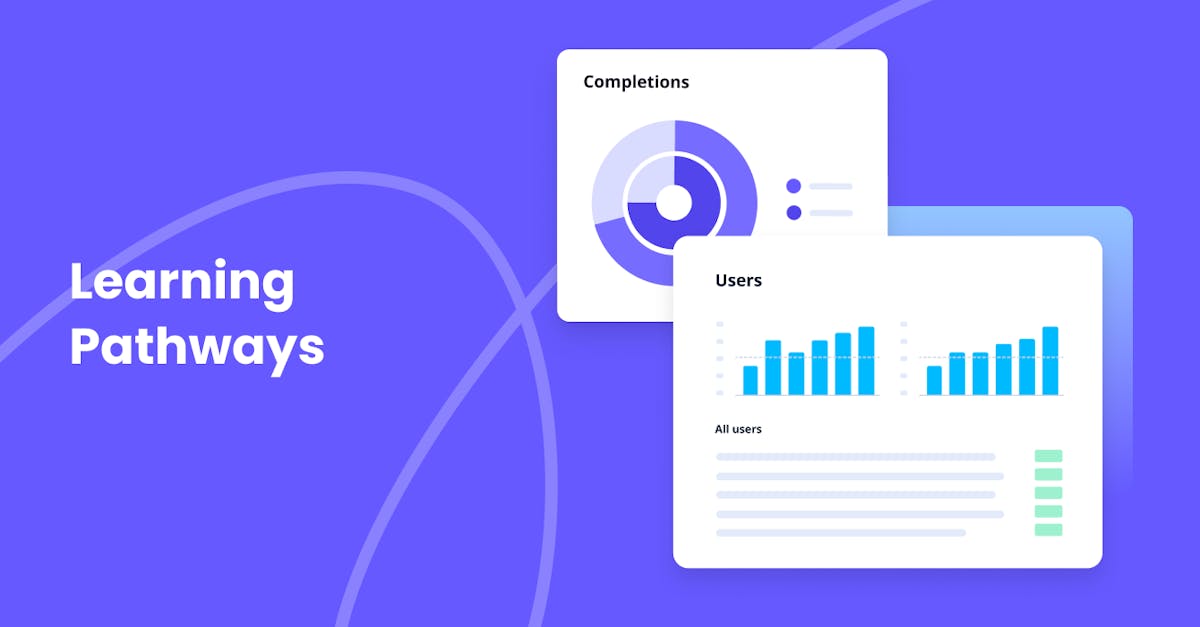
Training makes more sense when it’s part of a whole, just like a story with connecting chapters. This is exactly what learning pathways are, a sequence of lessons that are greater than the sum of their parts. In this article, we’ll explore what learning paths are, why they’re important to modern learners, and how to effectively apply them to your workplace today.
What are learning pathways?
Learning pathways are sequenced training lessons that aim to teach learners progressively. By taking each lesson step by step, a learner can comprehend and absorb knowledge more effectively. Certain topics will also make more sense when it’s contextualized and connected to another relevant topic.
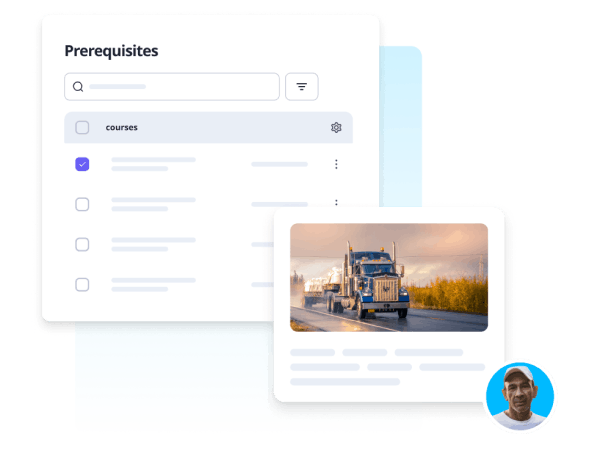
Another aim of educational pathways is to build a structured learning program to avoid overwhelming learners with too much information. And with an organized curriculum, learners can reach their goals much quicker, because they’ll be completing smaller steps rather than big chunks of lessons.
This way, learners can take ownership of their training and be more efficient with their learning
In short, these are the goals of learning pathways:
- High knowledge retention: With smaller lesson chunks, teams can remember important knowledge better without being overloaded with information
- Structured learning progression: Pathways to learning will make more sense when it’s seen as a bigger picture, with each lesson connecting.
- Personalization: Because learning paths are based on a learner’s progress, they can take their lessons at their own pace and even finish faster than expected.
An important thing to note is that modern elearning solutions and online learning platforms use learning paths as part of their design. Most training programs and learning management systems (LMS) have learning paths already available for use as it’s one of the more effective learning trends!
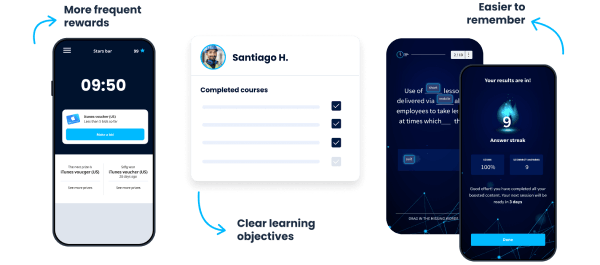
EdApp for example has a Paths feature that lets admins customize learning content based on pathways. You can build prerequisites, sequences, or even freeform paths for all kinds of learning.
Everything is drag-and-drop, so you can easily move courses around to whichever path, especially when your learners want to change their learning direction. You can even customize thumbnails for each path to make them more visible and appealing to learners!
Create an effective learning pathway for your teams today. Sign up with EdApp for free!
The importance of learning pathways (and benefits)
Whether you’re onboarding or upskilling, having a structured training program is important to save time and effort. Learning paths keep your learning programs organized, customizable, and efficient. Having set markers for learning goals makes it easier to track for training managers as well.
For employees, these are the benefits and advantages of learning paths:
- Learning at their own pace: Learning paths don’t usually require employees to sit down in just one location just like traditional learning. Most learning pathways can be taken whenever an employee can, which makes it effective for jobs with hectic schedules.
- High customization: Learning is in the hands of learners, your teams can take whatever lessons are most relevant to them. They don’t have to take topics that don’t serve them.
- Fulfillment at work: When employees are taking lessons that are relevant and important to them, they’re much more excited to grow. And a growing team is more fulfilled and satisfied to work.
- Staying updated with industry skills and compliance: Agile training paths give your employees a competitive edge in ever-growing industries. And with compliance requirements, you won’t have to worry about employees meeting the industry standards.
For training managers, here are just some of the benefits and advantages of pathways to learning:
- Increased employee engagement: With a structured learning program, employees are motivated to reach their goals, even with their workloads. Allowing them to grow will also motivate them to be more productive.
- Higher retention rate: A company that invests in learning paths shows that it cares about employee growth. They’re more likely to stay in a company that invests in their professional development.
- Close skill gaps: Once you’ve identified certain skill gaps, your learning managers can easily train employees with relevant lessons with customizable learning paths. And with customized learning, your company can address skill gaps much earlier.
- Easy progress tracking: Learning paths make it easier to track the progress of an employee’s training journey. Especially when you’re using an LMS, this process is all automated.
- Seamless performance management: When your teams are having performance issues, you can easily resolve them with structured training paths which lead to progressive performance improvement.
Examples of learning pathways
There are a wide variety of learning pathways, depending on the industry and learning environment. Here we’ll tackle some examples that are most relevant to workplace training.
- Onboarding learning paths: These are learning paths specifically for new hires who need to learn the ropes. This is essential to becoming cost-effective with training because it saves a lot of time for everyone involved. The faster new hires are onboarded, the more efficient your teams will be!
- Compliance learning paths: These are pathways for regulatory standards that need to be taken by all kinds of employees. Compliance training can be overwhelming and having learning paths helps make this process so much easier
- Upskilling learning paths: These are courses that are designed for specific skills and topics that may or may not be relevant to your employee’s role. These progressive pathways are made for learning new things that aim for career development.
- Sequenced learning paths: This is a kind of learning path that requires learners to finish and pass a course before proceeding to the next. This is to ensure that your learners are mastering the required skills and topics before they dive into the next ones.
- Learner’s Choice path: This is more of a freeform path where learners are more flexible with their choices. Usually, a set of courses are presented to them and it’s up to the learners in which order they want to take their training.
How to create learning pathways
Now that we’ve understood exactly what learning pathways are and their benefits to workplace training, let’s see how to create one for your team of learners.
- Identify skill gaps
Research is the first element of building any training program, with or without learning paths. Figure out what your company needs and what kind of learning goals you want to set for your different teams.

Once you’ve identified skill gaps, you can then prioritize which gaps need to be filled immediately and where to put resources for training.
1. Learn your team’s needs (and wants)
Meet with your teams to understand exactly what they want to learn. Figure out where they’re having difficulty with their roles and responsibilities. You can send out surveys or feedback forms, or even sit down and have a conversation with them.

2. Create learning content
Once you’ve done your research, you can find or build your training content for your teams. A lot of learning platforms have creator tools that allow you to create courses with multiple lessons in sequence. Or you can create your toolbox talks or find resource speakers to hold training on whatever topic you want your teams to learn.
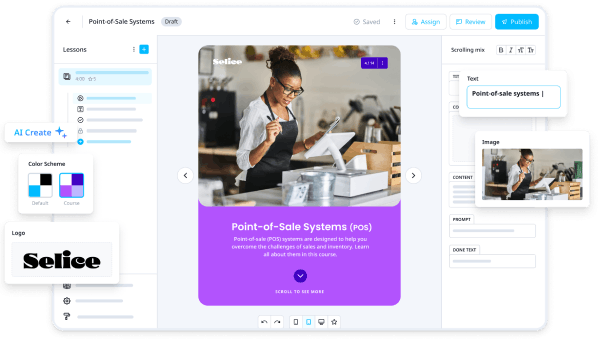
3. Track progress
Once you’ve created your path and built content, you also need to figure out how to track learner progress. That’s where reporting and analytics come in handy. Modern reporting dashboards usually give you insights regarding learner data and performance. This way, you can also figure out if your learner pathways are effective and see where you can improve.

4. Try adding social learning
Some modern learning pathways integrate different learning strategies like social learning. This is when your learners learn from peers or colleagues who may have expertise on the matter. You can add this to your learning paths as an application segment.
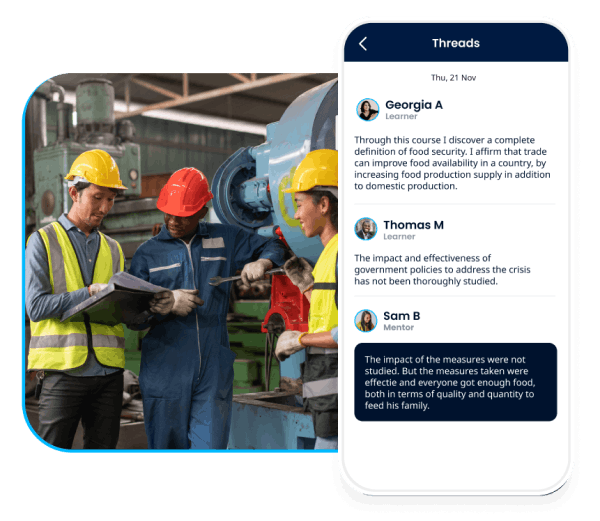
5. Use elearning software
By far, the most efficient way to deliver learning paths to your teams is using elearning software like a learning management system (LMS). Most learning software already have learning pathways integrated into their courseware design. From course creation to reporting, everything is integrated.
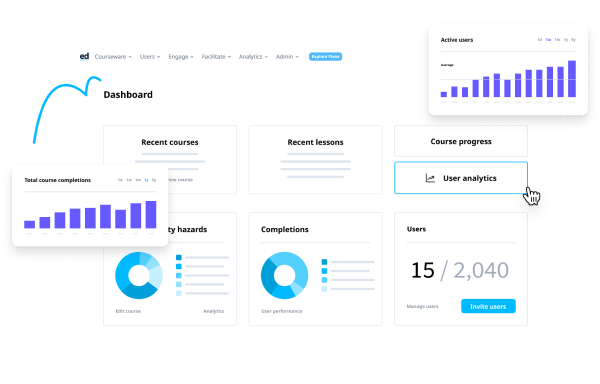
Use an award-winning elearning software for free!
Author
Alec Bailon
Alec is an eLearning expert for EdApp, a pioneer LMS that designs creative mobile workplace training solutions. On the off days, they enjoy cooking, reading, or finding a live show or play to watch.
